The blue wildebeest (Connochaetes taurinus), sometimes known as the gnu, is an antelope species. Their heads are huge and boxy, with curved horns. Their forequarters are bulky, but their hindquarters are small with spindly legs. They have a gray coat and a black mane, as well as a black or white beard. Wildebeest come in a variety of races. The western white-bearded wildebeest inhabits the Serengeti-Mara habitat of Kenya and Tanzania, whereas the eastern white-bearded subspecies occupy Kenya and Tanzania east of the Gregory Rift. The blue or brindled race exists south of the Zambezi River. The intimidating look of the ungainly gnu (pronounced “g-new” or simply “new”) gained it the Afrikaans moniker wildebeest, or “wild beast,” because to its huge head, shaggy mane, pointed beard, and sharp, curving horns. In truth, the wildebeest is best regarded as a dependable supply of food for the African savanna’s true predators: lions, cheetahs, wild dogs, and hyenas.
Every year, up to 500,000 calves are born in February and March, at the start of the rainy season. Calves learn to walk within minutes of birth and can keep up with the herd within days. Wildebeests can live for up to 20 years.
There are five known subspecies of Blue Wildebeest in Africa:
C. t. taurinus – Blue wildebeest or bridled gnu
C. t. albojubatus – Eastern white-bearded wildebeest
C. t. cooksoni – Cookson’s wildebeest
C. t. johnstoni – Nyassaland wildebeest
C. t. mearnsi – Western white-bearded wildebeest
Blue Wildebeest: Species Profile
COMMON NAME: Blue Wildebeest
SWAHILI NAME: Nyumbu
SCIENTIFIC NAME: Connochaetes taurinus
TYPE: Mammal
FOOD: Blue Wildebeests are herbivores and primarily graze on grasses. They have a specialized digestive system that allows them to extract nutrients from tough, fibrous vegetation. During the dry season, they may also browse on leaves and shrubs.
HABITAT: Blue Wildebeests inhabit open grasslands, savannas, and woodlands across East and Southern Africa. They can be found in countries such as Kenya, Tanzania, South Africa, and Botswana. They are well adapted to a variety of habitats as long as there is access to water and ample grazing areas.
SIZE: Blue Wildebeests are large antelopes with a shoulder height of approximately 130-150 centimeters (51-59 inches). Adult males, known as bulls, are larger and heavier than females, known as cows. Bulls can weigh around 180-270 kilograms (400-600 pounds), while cows weigh around 160-210 kilograms (350-460 pounds).
AVERAGE LIFE SPAN IN THE NATURAL HABITAT: In the wild, Blue Wildebeests have an average lifespan of 20-25 years. However, they can live longer in captivity, with some individuals reaching 30 years or more.
ACTIVE: Blue Wildebeests are diurnal animals, meaning they are primarily active during the day. They are known for their seasonal migrations, where they travel in large herds in search of food and water. During the migration, they can cover long distances and face various challenges, such as predation and crossing rivers.
GESTATION PERIOD: The gestation period of Blue Wildebeests lasts approximately 8.5 months. After this period, a single calf is born. The calves are able to stand and walk shortly after birth and join the herd within a few days.
WEIGHT: The weight of Blue Wildebeests varies depending on their sex. Adult males, or bulls, typically weigh between 180-270 kilograms (400-600 pounds), while adult females, or cows, usually weigh around 160-210 kilograms (350-460 pounds).
SIZE COMPARISON TO A 6-FT MAN: Blue Wildebeests are larger and taller than a 6-ft man. With a shoulder height of approximately 130-150 centimeters (51-59 inches), they stand significantly taller than an average human. Their muscular build, curved horns, and distinct appearance make them an iconic species of the African savannas.
Striking Physical Characteristics:
The Blue Wildebeest, also known as the Common Wildebeest or the Brindled Gnu, is a large and robust antelope species that is native to the grasslands and savannahs of Eastern and Southern Africa. Here is a description of its appearance:
Size and Build: Blue Wildebeests are large animals, with males, known as bulls, measuring around 4.6 to 5.6 feet (140 to 170 centimeters) at the shoulder, and weighing between 350 to 600 kilograms (770 to 1,320 pounds). Females, known as cows, are slightly smaller and lighter. They have a robust build with a muscular body and strong legs, which enable them to undertake long-distance migrations.
Coloration: Blue Wildebeests have a unique and striking appearance. Their coat is predominantly grayish-blue or bluish-gray, hence their name, and they have a dark mane and beard that extends from the throat to the chest. Their bodies are adorned with vertical black stripes, known as brindles, which provide effective camouflage in their grassland habitat.
Head and Horns: The head of a Blue Wildebeest is large and elongated, with a broad muzzle and wide-set eyes positioned to the sides, allowing for a wide field of vision. Both males and females possess curved, backward-sweeping horns, although the males’ horns are typically larger and more robust, curving inwards and then outwards. These formidable horns can reach lengths of up to 28 inches (70 centimeters) and serve as both a defensive mechanism and a symbol of dominance during mating rituals.
Beard and Facial Features: One distinguishing feature of Blue Wildebeests is the presence of a long, black beard hanging from the chin, extending down towards the chest. This beard, along with their dark facial coloration, adds to their unique appearance and sets them apart from other antelope species.
Tail: Blue Wildebeests have a long, tufted tail that reaches down to their hocks. The tail is mainly black in color, contrasting with the bluish-gray body, and is used to swat away flies and other bothersome insects.
Overall, the Blue Wildebeest has a distinctive appearance with its grayish-blue coloration, brindled patterns, dark mane and beard, and impressive horns. This remarkable combination of physical characteristics allows them to adapt and thrive in the diverse grassland ecosystems of Africa.
A. Distinctive Silhouette:
The Blue Wildebeest possesses a robust and muscular build, characterized by a sloping back, a broad chest, and a powerful neck. Their most recognizable feature is their large, curved horns, which are present in both males and females. The horns, combined with their shaggy, dark blue-gray coat, contribute to their unique and memorable silhouette.
B. Long Muzzle and Beard:
One of the defining features of the Blue Wildebeest is their elongated muzzle, which helps them efficiently graze on a variety of grasses. They also sport a tuft of dark hair beneath their chin, commonly referred to as a beard or bristle, adding a touch of character to their appearance.
Habitat and Range:
A. Grassland and Savannah Environments:
Blue Wildebeests are well-adapted to thrive in open grassland and savannah habitats. They can be found in several countries across Africa, including Tanzania, Kenya, South Africa, and Botswana. These expansive landscapes provide an abundance of nutritious grasses, as well as water sources critical for their survival.
B. Habitat Preferences:
Within their range, Blue Wildebeests favor areas with a mixture of short and tall grasses, which offer both food and cover. They are often found near permanent or seasonal water sources, as they require regular access to water for drinking and bathing.
Behaviour
Blue Wildebeests, also known as Common Wildebeests or Brindled Gnus, exhibit fascinating behavioral patterns in their natural habitat. Here are some key aspects of their behavior:
1. Social Structure: Blue Wildebeests are highly social animals and are often found in large herds, known as “clans” or “crashes.” These herds can consist of hundreds or even thousands of individuals. Within the herd, there is a hierarchical structure, with dominant males known as “bulls” leading and defending the group.
2. Mating Season and Rut: During the mating season, which typically occurs in the dry months, Blue Wildebeests engage in an intense period of rutting behavior. Dominant bulls establish territories and compete with each other for the right to mate with females, known as “cows.” They display their dominance through various behaviors such as roaring, challenging other males, and engaging in physical clashes with their horns.
3. Vocalizations: Blue Wildebeests are known for their distinctive vocalizations, which play a crucial role in communication within the herd. They produce deep, resonant grunts and snorts, particularly during the rutting season, to attract mates, assert dominance, and warn others of potential danger.
4. Migration: Blue Wildebeests are famous for their annual migration in search of food and water. They undertake long-distance movements, often covering hundreds of miles, in search of fresh grazing lands. These migrations are triggered by the availability of resources and are coordinated efforts of the entire herd.
5. Anti-Predator Strategies: Blue Wildebeests are preyed upon by a range of large predators, including lions, hyenas, and crocodiles. To protect themselves, they rely on their collective behavior and the “safety in numbers” strategy. The herd’s sheer size and close proximity make it difficult for predators to single out individuals. Additionally, their excellent sense of hearing and sight helps them detect potential threats, and they will often stampede together when danger is perceived.
6. Grazing Behavior: Blue Wildebeests are predominantly grazers, feeding on a variety of grasses and occasionally browsing on leaves and shoots. They have adapted to consume both short and long grasses, enabling them to thrive in different habitats and adapt to changing food availability.
7. Synchronized Movements: Within the herd, Blue Wildebeests display remarkable synchronized movements. When they are on the move or during their migration, the herd can be seen moving in unison, creating an impressive spectacle. This synchronized behavior is believed to provide better protection against predators and enhance their survival chances.
The behavioral patterns of Blue Wildebeests showcase their social nature, mating rituals, migration, and defense strategies. These behaviors contribute to their survival and enable them to thrive in the dynamic African grassland ecosystems.
Migratory Behavior:
A. Great Wildebeest Migration:
One of the most awe-inspiring natural spectacles on Earth is the Great Wildebeest Migration, where millions of Blue Wildebeests embark on an epic journey in search of greener pastures. This cyclical migration takes place between the Serengeti National Park in Tanzania and the Maasai Mara National Reserve in Kenya. It is a remarkable display of resilience and survival instincts as the wildebeests brave treacherous river crossings and navigate vast distances in their quest for food and water.
B. Seasonal Movements:
Even outside of the Great Migration, Blue Wildebeests exhibit seasonal movements in response to changing food availability and rainfall patterns. They form large herds and undertake smaller-scale migrations within their home ranges, ensuring they can access fresh grazing areas and water sources.
Social Dynamics:
A. Herd Structure:
Blue Wildebeests are highly social animals, forming large herds that can consist of thousands of individuals. These herds are often mixed, comprising females, their calves, and a hierarchy of males. The herd structure provides safety in numbers and enables collective vigilance against predators.
B. Courtship and Mating:
During the breeding season, dominant males engage in fierce battles to establish their territory and claim mating rights. These displays involve posturing, horn-clashing, and vocalizations. The successful males gather and defend a group of females, ensuring their genetic contribution to future generations.
Conservation Status:
While Blue Wildebeests are currently not considered a threatened species, they face conservation challenges due to habitat loss, poaching, and conflicts with human activities such as agriculture and infrastructure development. Conservation efforts, including protected areas, anti-poaching measures, and community engagement, are crucial for their long-term survival.
Connochaetes taurinus
The Connochaetes taurinus (Blue Wildebeest), with its iconic appearance, remarkable migrations, and complex social dynamics, holds a special place in the African landscape. As we appreciate the beauty and ecological significance of these nomadic herbivores, it is imperative that we prioritize their conservation. By supporting initiatives that protect their habitat, promote sustainable land use practices, and raise awareness about their importance, we can ensure the continued existence of the Blue Wildebeest for future generations to marvel at.
Blue Wildebeest Adaptations
Blue Wildebeests, also known as Common Wildebeests or Brindled Gnus, have several remarkable adaptations that help them thrive in their natural habitat. These adaptations are crucial for their survival in the challenging grassland ecosystems of Africa. Here are some notable adaptations of the Blue Wildebeest:
1. Robust Build: Blue Wildebeests have a sturdy and robust build, with strong legs and a muscular body. This physical adaptation allows them to withstand long-distance migrations and traverse the often uneven and rugged terrain of the grasslands.
2. Speed and Agility: Wildebeests possess remarkable speed and agility, which are vital for escaping predators. They can reach speeds of up to 50 miles per hour (80 kilometers per hour) when running in a full sprint. This adaptation helps them evade predators like lions and hyenas, which often target individuals from the herd.
3. Highly Developed Sense of Hearing and Sight: Blue Wildebeests have excellent senses of hearing and sight. Their large, protruding eyes are positioned to the sides of their head, giving them a wide field of vision to detect approaching predators. They also have keen hearing, enabling them to pick up on distant sounds, such as the roars of lions or alarm calls from other animals, which helps them stay alert and respond quickly to potential threats.
4. Camouflage and Brindled Coat: The blue-gray coat of the wildebeest, adorned with vertical black stripes known as brindles, provides effective camouflage in the grassy savannahs. This adaptation helps them blend in with their surroundings, making it harder for predators to single them out from the herd.
5. Efficient Grazing Teeth: Blue Wildebeests possess large, strong, and sharp incisor teeth, as well as a specialized set of molars. These teeth adaptations allow them to efficiently graze on tough grasses, which are abundant in their grassland habitat. They can consume both short and long grasses, maximizing their feeding opportunities.
6. Water Conservation: Blue Wildebeests have adapted to survive in arid environments by efficiently conserving water. They can obtain a significant portion of their water requirements from the vegetation they consume, reducing their dependence on external water sources. This adaptation allows them to survive in areas with limited water availability.
7. Social Behavior: The social behavior of Blue Wildebeests is another notable adaptation. Living in large herds provides them with protection against predators. The herd acts as a collective defense mechanism, with individuals alerting each other to potential dangers and engaging in coordinated movements to confuse predators.
These adaptations have allowed Blue Wildebeests to thrive in the grasslands of Africa. Their robust build, speed, keen senses, camouflage, efficient grazing teeth, water conservation abilities, and social behavior all contribute to their survival and success as a species.
Best place to see Blue Wildebeests in Tanzania
Tanzania is a fantastic destination for observing Blue Wildebeests in their natural habitat. Here are some of the top locations in Tanzania where you can see these magnificent animals:
1. Serengeti National Park:
Renowned for its iconic wildebeest migration, the Serengeti National Park is one of the best places to witness vast herds of Blue Wildebeests. This UNESCO World Heritage Site offers incredible opportunities to observe these animals as they traverse the grassy plains in search of fresh grazing areas.
2. Ngorongoro Conservation Area:
The Ngorongoro Conservation Area, encompassing the Ngorongoro Crater, is home to a diverse range of wildlife, including Blue Wildebeests. The open grasslands and abundant water sources attract these animals, providing visitors with excellent sightings and photographic opportunities.
3. Tarangire National Park:
Tarangire National Park is known for its picturesque landscapes and diverse wildlife, including large populations of Blue Wildebeests. The park’s expansive grasslands, woodlands, and seasonal swamps offer a favorable habitat for these animals, making it an ideal location for observing their behavior.
4. Ruaha National Park:
Located in southern Tanzania, Ruaha National Park is known for its remote and wild beauty. The park is home to significant populations of Blue Wildebeests, offering visitors a chance to see them in a less crowded and off-the-beaten-path setting.
5. Selous Game Reserve:
Selous Game Reserve is one of the largest protected areas in Africa and a UNESCO World Heritage Site. This pristine wilderness is home to diverse wildlife, including Blue Wildebeests. Exploring the reserve’s grassy plains and riverine forests provides ample opportunities for encountering these magnificent animals.
These locations provide excellent chances to witness the awe-inspiring sight of Blue Wildebeests in their natural environment. Whether you visit the Serengeti during the migration, explore the Ngorongoro Crater, or venture into the lesser-known reserves, Tanzania offers unforgettable wildlife experiences.
Blue Wildebeest Safari tips
When embarking on a safari to observe Blue Wildebeests in Tanzania, it’s essential to keep a few tips in mind to enhance your wildlife experience. Here are some safari tips specifically tailored for encountering Blue Wildebeests:
1. Choose the Right Season: The migration of Blue Wildebeests in Tanzania is a remarkable spectacle. To witness this extraordinary event, plan your safari during the dry season (June to October) when the wildebeests gather in large herds and undertake their annual migration in search of fresh grazing areas.
2. Hire an Experienced Guide: To make the most of your safari, consider hiring an experienced guide or joining a reputable tour operator. A knowledgeable guide can provide valuable insights into the behavior, habitat, and movement patterns of Blue Wildebeests, ensuring you have the best chances of encountering them during your safari.
3. Opt for Game Drives: Game drives are a popular and effective way to explore the national parks and reserves in Tanzania. These guided excursions in specially designed vehicles allow you to cover vast areas and increase your chances of sighting Blue Wildebeests. Game drives typically take place during the early morning or late afternoon when wildlife activity is high.
4. Be Patient and Observant: Observing wildlife requires patience and keen observation skills. Keep your eyes peeled for any movement or signs of wildebeests in the distance. Look out for dust clouds or gathering vultures, as these may indicate the presence of wildebeests and potential predator interactions.
5. Bring Binoculars and Camera Gear: Having a good pair of binoculars is essential for spotting wildlife, including Blue Wildebeests, in the distance. Additionally, bring along your camera gear to capture the incredible moments and create lasting memories of your safari adventure.
6. Respect Wildlife and Keep Distance: While observing Blue Wildebeests, it’s crucial to respect their natural behavior and keep a safe distance. Avoid making sudden movements or loud noises that may disturb or stress the animals. Remember, you are a guest in their habitat, and it’s important to prioritize their well-being.
7. Observe Safety Precautions: Always follow the instructions and guidelines provided by your guide or park authorities. Stay inside the vehicle unless in designated areas, as this ensures your safety and minimizes any potential disturbance to the wildlife.
By following these safari tips, you can maximize your chances of encountering and observing Blue Wildebeests in their natural habitat. Enjoy the beauty of Tanzania’s wildlife and the captivating presence of these magnificent animals.
Frequently Asked Questions about Blue Wildebeests
1. Are Blue Wildebeests and wildebeests the same?
Yes, Blue Wildebeests and wildebeests are the same species. The term “Blue Wildebeest” is often used to refer to the species known as the wildebeest or the common wildebeest (Connochaetes taurinus).
2. What is the significance of the wildebeest migration?
The wildebeest migration, which includes Blue Wildebeests, is considered one of the greatest wildlife spectacles on Earth. It involves the seasonal movement of millions of wildebeests, along with other herbivores, across the Serengeti ecosystem in Tanzania and the Maasai Mara National Reserve in Kenya. This migration is driven by the search for fresh grazing areas and water sources, and it is a remarkable display of animal behavior and survival instincts.
3. What do Blue Wildebeests eat?
Blue Wildebeests are herbivores and primarily feed on grasses. They are well adapted to grazing and have a specialized digestive system that allows them to extract nutrients from tough, fibrous vegetation.
4. How fast can Blue Wildebeests run?
Blue Wildebeests are incredibly agile and can reach speeds of up to 50 miles per hour (80 kilometers per hour) when they need to escape from predators or during the wildebeest migration. Their speed and endurance help them navigate through vast landscapes and avoid potential threats.
5. Do Blue Wildebeests have any natural predators?
Yes, Blue Wildebeests have several natural predators, including lions, hyenas, cheetahs, leopards, and crocodiles. These predators often target vulnerable individuals, such as sick or young wildebeests, during the migration or when they gather near water sources.
6. How long is the gestation period for Blue Wildebeests?
The gestation period for Blue Wildebeests is approximately 8.5 months. After this period, the female wildebeest gives birth to a single calf, which is able to walk and keep up with the herd within a few minutes of being born.
7. Are Blue Wildebeests social animals?
Yes, Blue Wildebeests are highly social animals and live in herds. These herds can vary in size, ranging from a few individuals to several thousand during the wildebeest migration. Living in groups provides them with protection against predators and enhances their chances of survival.
8. How long do Blue Wildebeests typically live?
Blue Wildebeests have an average lifespan of around 20 years in the wild, although some individuals have been known to live longer under favorable conditions.
9. Are Blue Wildebeests endangered?
Blue Wildebeests are not considered endangered. They are classified as a species of least concern by the International Union for Conservation of Nature (IUCN). However, certain subspecies and populations may face localized threats due to habitat loss, poaching, and human-wildlife conflict.
10. Can I see Blue Wildebeests in other countries besides Tanzania?
Yes, Blue Wildebeests are found in several other countries in East and Southern Africa, including Kenya, Uganda, Zambia, Zimbabwe, and South Africa. However, Tanzania’s Serengeti National Park is particularly renowned for the wildebeest migration and offers unparalleled opportunities to witness this natural phenomenon.

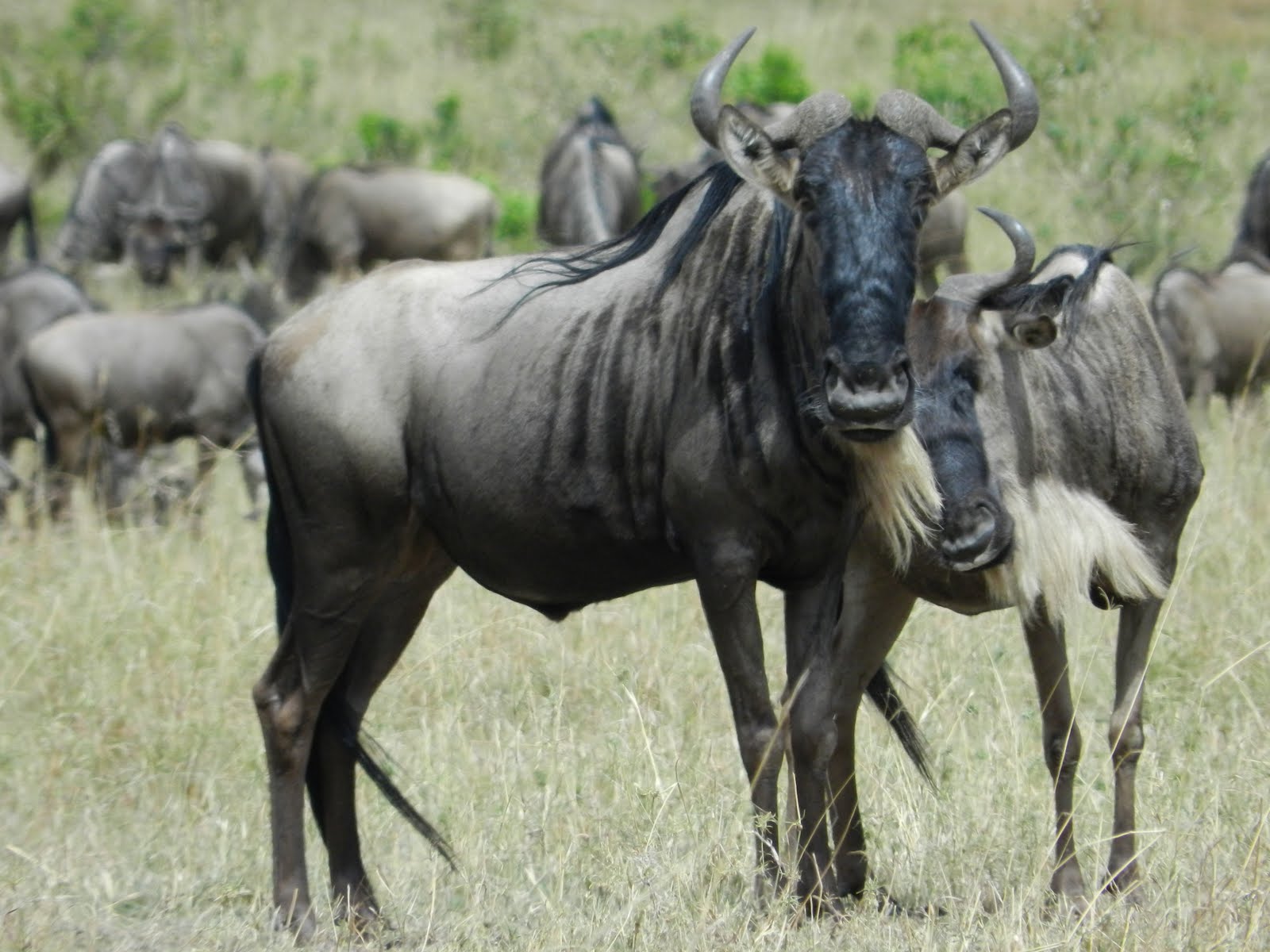
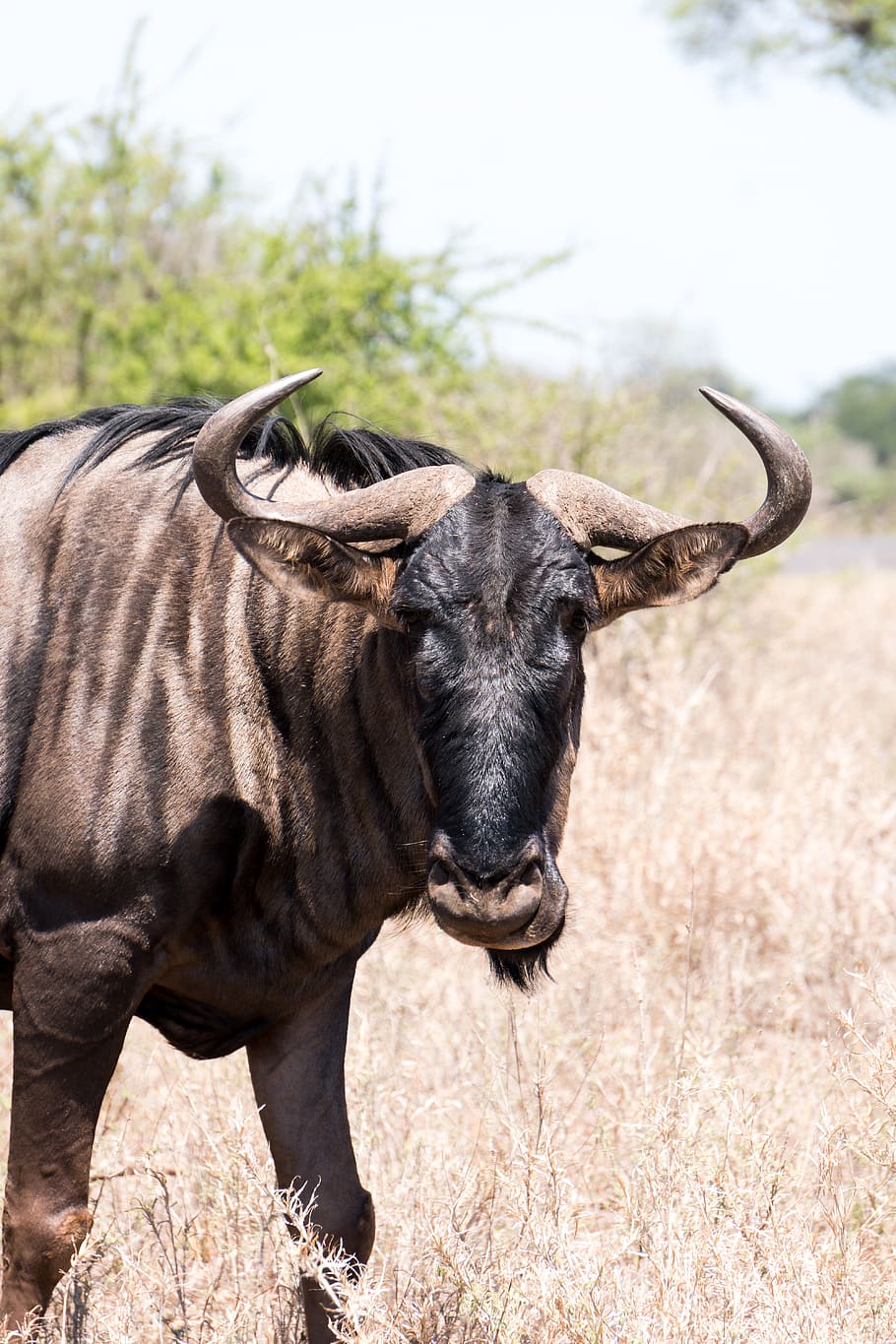

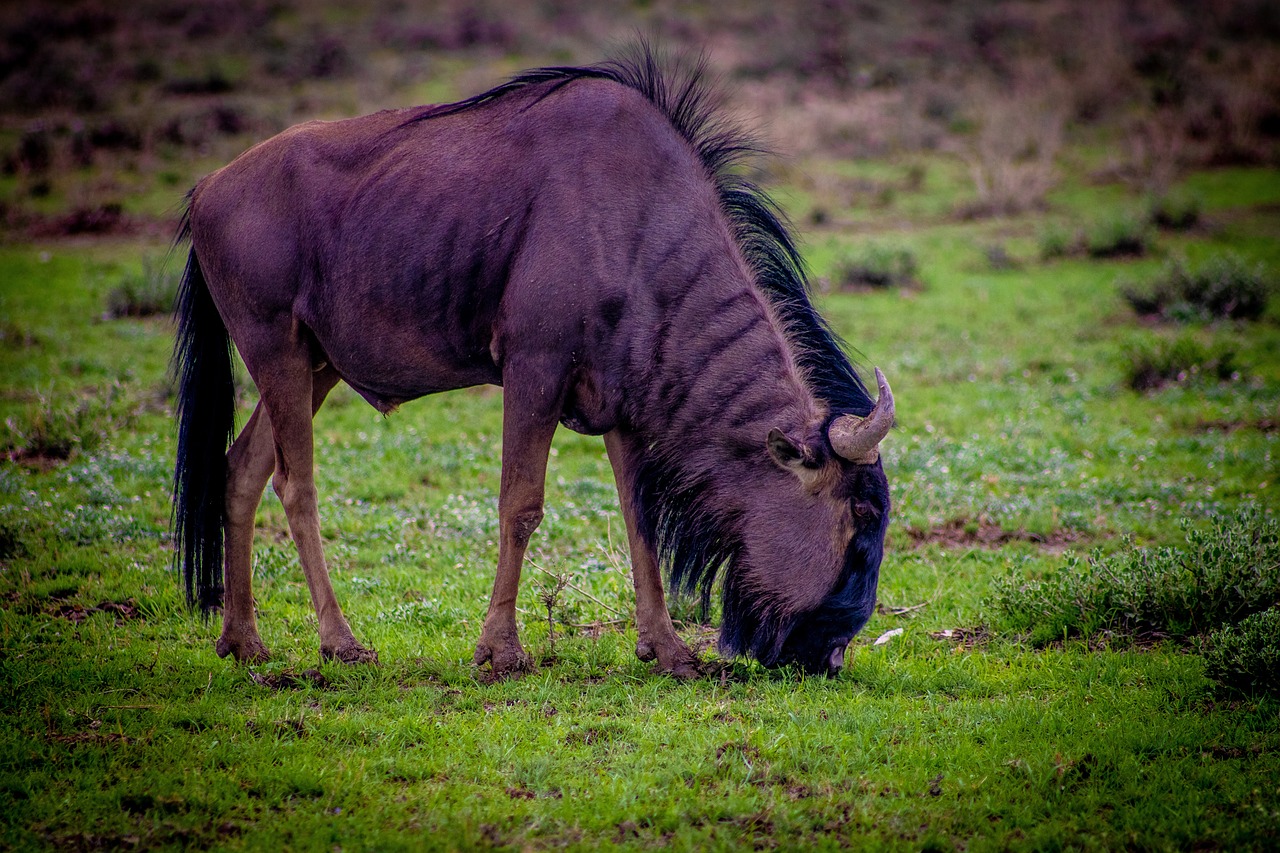
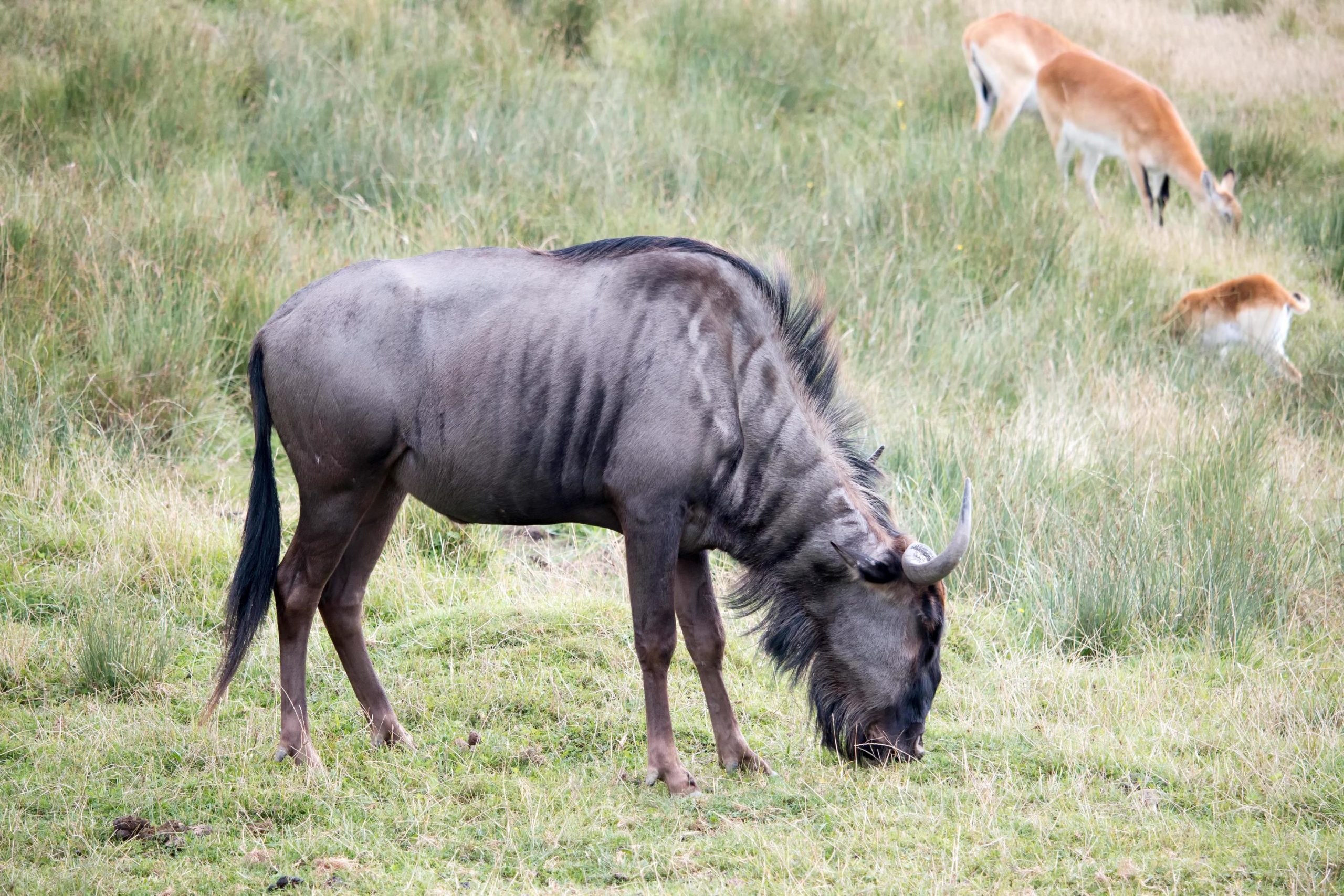

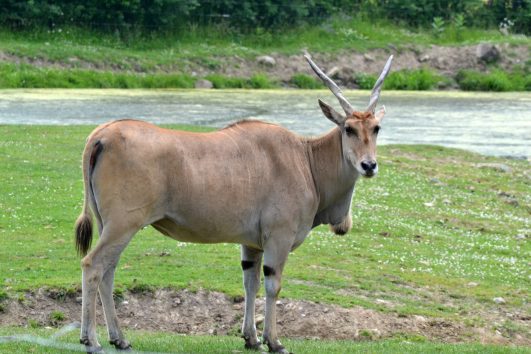
Tour Reviews
There are no reviews yet.
Leave a Review